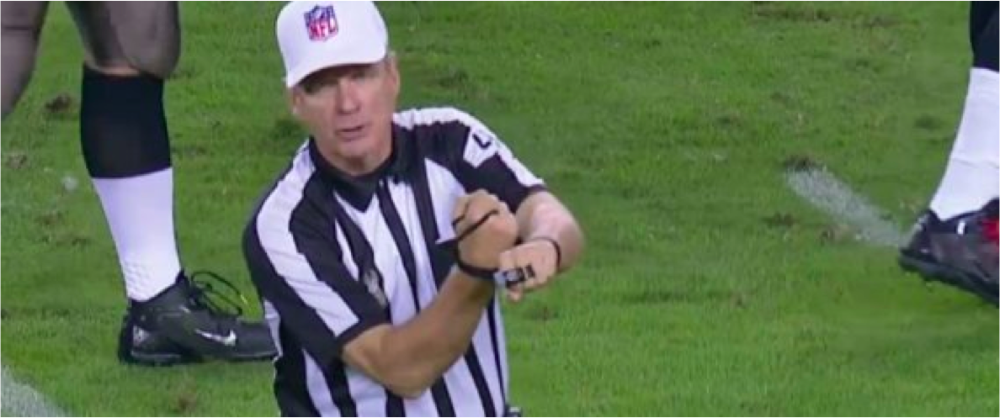Property Claim Unnecessary Roughness
Jeff Esper

More often than not, a large property and business interruption insurance claim turns into an “us vs. them” scenario, creating a rough process for all involved. Not unlike a football game, someone is trying to win - at any cost. As a forensic accountant for over twenty years, specializing in quantifying business interruption losses and documenting property claims for policyholders, I’ve seen the good, the bad and the ugly. The problem is that the process is designed to focus on disagreements.
We’ve heard the concerns from our clients and the insurers, and we can understand both perspectives. Policyholders accuse the adjuster of being unreasonable - trying to stick it to them at every turn. Insurers accuse policyholders of trying to take advantage of the claim in an attempt to get more than they deserve. The battles can become very heated, even on a personal level. Once during a claim meeting on a large loss, the discussion between the parties intensified until an executive, from the insured, ordered the adjustment team to “get out of my building!”
Disagreement in the course of a property insurance claim is an anticipated part of the process, but there are ways to keep it civilized and productive. It is possible to come to a fair representation of the loss without all the aggravation. The fix is really quite simple but will require the insured and insurer to take responsibility for their contribution to both the problem and the solution.
Here are some ways insurers can improve the claim process:
- Take Time to Understand the Insured’s Business
- Too often the adjuster wants to appear to know it all. It is better to listen first and try to understand the insured's position. Understanding your customer is common business sense.
- Adjusters Should Have Superlative People Skills
- A big part of an adjuster’s role is to coordinate with experts needed for the situation. These are management and organizational skills. In other words, the adjuster does not need to know all the technical aspects of every loss and would be better served knowing more about how to manage people and deal with customers. Whether it’s from retiring baby boomers or cost cutting, there is a lack of well trained and experienced adjusters.
- Give the Adjuster More Control
- Even the best adjusters are impaired by the current claim process. Adjusters seem to have limited authority to make decisions. Policyholders find it pointless to explain their issues in great detail, when the real decision maker is somewhere in the background. When pressed to make a decision, they just throw their hands up. It’s difficult to make any progress, when the adjuster has to get every little decision approved by their superiors. To the insured, it just seems like it’s a delay tactic to put off payment, and only adds to feeding mistrust.
Here are some ways policyholders can improve the claims process:
- Give the Process a Chance
- While there are many times you will experience some of the problems mentioned above, the process can work with the right people involved. Communicate with the adjuster and their team. Be responsive to all requests that are reasonable and appropriate. If otherwise, ask for clarification and then address your concerns right away.
- Maintain Good Relations with Realistic Expectations
- Set realistic expectations for what you want, like advance payments and resolution of differences. Though insurers are not obligated to finance a rebuild project, they should be willing to advance money to stay ahead of the cash expenditure. By maintaining good relations with the adjuster, they’ll be more open to working with you rather than against you.
- The Best Defense Is a Good Offense
- Be prepared and organized on your end so that you can require the same of the insurance company. You cannot withhold information until the last minute and then demand resolution and payment. The faster you answer questions and requests, the faster they can review them. Often times it takes them longer to review the support you provide because they review the information in a vacuum. Don’t assume they understand what to ask for or what has been presented. Promote frequent meetings and discussion to make sure misunderstandings are not made part of their reports to underwriters - once it is on the record, it is harder to change.
- Escalate When Needed
- If issues start to arise that cannot be resolved, rather than letting it fester, escalate it to the markets involved. It is no different than speaking to a manager at a restaurant. It’s better to deal with decision makers when action is needed. This should only be used as a last resort to avoid litigation.
- The insurance claim process has it's flaws. I don’t think it’s intentional, but rather a result of how it has evolved. The best approach to improving the process is by recognizing the challenges with an “us vs. them” mentality and finding a way to work cooperatively through the claim. Both sides need to help to fix it, so that more claims get resolved as they should.
Published 2-1-16: InsuranceThoughtLeadership.com
Insights Worth Sharing

Making a business interruption claim is more than just an accounting exercise. It requires a good strategy, a thoughtful process and perhaps most of all, patience. These lessons come from experience and the team at RWH Myers has earned it from decades of preparing BI claims. Though this topic is of the philosophical nature, it is just as important as the details behind a business interruption calculation. So let’s dive in and see what you really need to make a BI claim. Strategy Every loss is different. You can’t apply the same game plan and the same approach to every claim. You have to assess the situation and all its parts to devise a specific workable strategy. Experience will help ensure your strategy is appropriate for the situation, but the claim will take on a life of its own. The initial loss assessment is derived from the loss information such as what happened, the timeline of events, the impact to operations and how long it will take to get back to normal. As forensic accountants, we will look at the entirety of the situation and dissect it from every angle to figure out the full scope of loss and then determine the best approach to measuring and supporting the claim. We will also anticipate how the claim will be adjusted and plan for arguments against the claim. Taking the time to develop a proper strategy will pay off at every stage of the claim process. Process Once you understand the situation and have designed an effective strategy, you can lay out a process to get to the desired result. The process starts off with identifying and assembling the team to execute the plan. The claim will require data from various sources and input from key internal experts to provide insights as to the impact on operations, both upstream and downstream. The process also includes managing claim adjustment, from setting the timeline to handling requests for information. During the process, your claim preparer will work to keep all phases of the claim moving forward whether with data gathering or insurer feedback. Claims tend to start out with a high level of attention, but it is common to lose momentum. Simply put, a well-defined process will keep the claim moving, limiting distractions and roadblocks. Patience Patience doesn’t equate to conceding to a lengthy and arduous process. It’s just the opposite. By definition, it means, “quietly and steadily persevering or being diligent, especially in detail or exactness.” It is important to understand that certain parts of the claim take time to develop, and that time is critical to ensuring a thorough and well thought out claim presentation. For example, taking your time in the beginning of the process to lay out the foundational elements of the claim will avoid obstacles that may delay claim settlement and the amount recovered. It’s best to set expectations early and commit to the process. Again, practicing patience will expedite the claim process and improve the outcome. You can rely on the experience of your forensic accounting team to lead that effort. So, you see, it’s not all about the numbers. There is more to the intangibles than you may have thought. Every claim has its own unique challenges. You should be prepared for anything and everything. Again, preparing a claim is just as much strategy, process, and patience as it is the technical elements of claim preparation.

Property damage insurance claims are among the most infrequent for corporate policyholders, but this year Louisiana has suffered through a record number of Hurricanes. When catastrophe strikes, recovering insured losses essential to rebuild and resume operations. Effected policyholders will need expert help to evaluate, organize and document their claim to present to insurers. Forensic accountants that devote their practice to preparing claims for policyholders have every day experience just as adjusters and auditors do, so it is certainly to your advantage to hire a firm of experts to represent your interests throughout the property damage and time element claim process. Though the specific insurance claims and the policyholders may change, the vital steps to recovery remain the same. One thing both sides agree on is that the claim process goes smoother when the policyholder is well prepared for demands of a claim from start to finish. The partners at RWH Myers prepared a detailed guide to assist policyholders in preparation for claim recovery. It is designed to serve as a resource and a framework for the claim process and includes the following sections: Establish Appropriate Accounting Methodology: Provides guidance and an organizational framework for post-loss activities, establishing specific accounts to capture the loss. Property Damage Expense Categories: Explains the types of expenses that may be included in each category of coverage and the documentation required for these costs. Claim Preparation Objectives and Overview: Identifies objectives for the claim preparation process, and provides a conceptual framework for achieving them. What is Covered: Examines the direct and indirect exposures to loss that are typically encountered, and provides guidelines for determining whether specific types of property damage losses are covered under the policy. Claim Preparation Procedures: Suggests timetables for the submission of inventory, property damage, and discusses the format and content of standard claim submissions. Audit and Settlement Guidelines: Discusses the procedures undertaken by the insurers adjusters and experts, and provides an overview of the settlement process. Click here to download the full guide.


